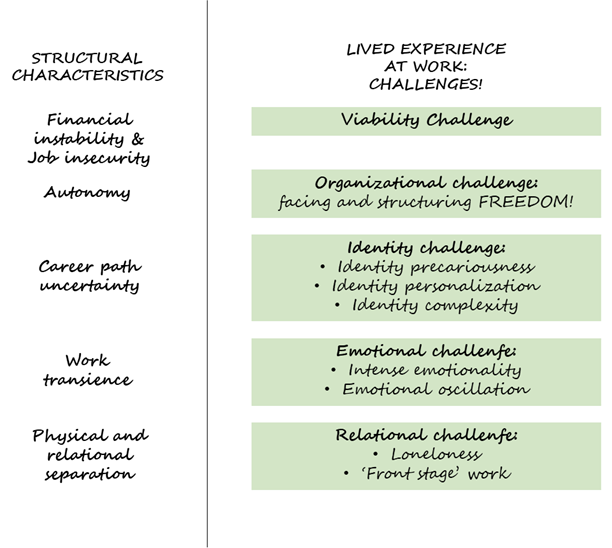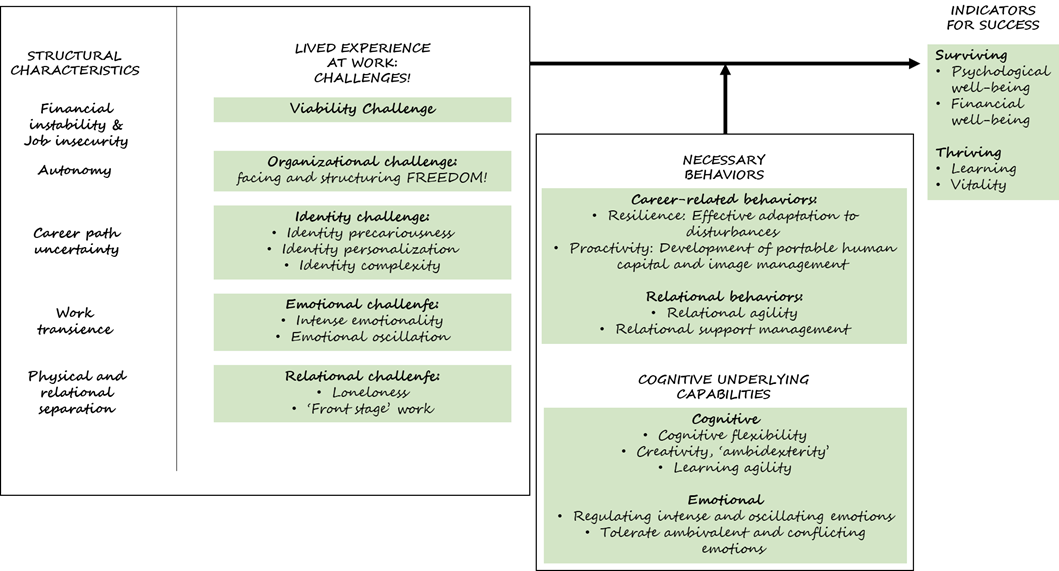
Role absence: GIG project management (Roles: part 2)
OK Stefano. You talked to us about the identification of people in the organizations in which they work, the role of belonging in the definition of self and personality. You talked about the numerous roles we play, due and caused by the articulation of our organizational world and the transitions and rites of passage we create to move from one to the other while preserving our ‘place’ in those worlds. But how do we behave when it is the organization itself, my employer, the economic pressure, the crisis that question what we are, when every six months there is an adjustment, a change, a transformation? And how can I say that I have a job when I work from home, stay connected all day, when colleagues are constantly changing, when my contract lasts as long as it lasts?
It happens more and more often: the promise of continuity, belonging, journey, of ‘experience’ is increasingly ephemeral in today’s companies, even those that seem more inspired might change ownership or shareholder overnight. In front of us, our way of working is increasingly aligned with a gig-economy model, the economy of hyperflexibility and autonomy. In this model, Peter Drucker’s words are taken to extremes: in the knowledge economy, everyone is their own CEO. If you think about it, today the frenzy of project working (and of course team working) brings the gig model into companies. In an article dedicated to this theme (From Surviving to thriving in the gig economy) Susan Ashford, Brianna Barker Caza and Erin Reid give us the perspective of organizational psychology about this phenomenon.
In the image below there are five significant categories of work where the new way of working and the old one maximizes the extremes of each. Try to think about it:

To be successful (perhaps just to survive …) and navigate in this world of gig-projects, you need to be able to deal with contexts with greater instability (economic and contractual), greater demand for autonomy (decision-making and operational), uncertainty in the duration and direction of one’s own career, greater orientation towards change and transition in one’s role and in one’s daily work, greater physical and relational separation. Be careful because remote working is pushing us fast towards the high value scale of these context elements. Ashforth and her study tell us that a whole range of more intense and unsettling experiences arise as you move up to the upper register of the comparison figure above.
This figure below and these new correlations are very interesting: the individual is presented with organizational, emotional, identity, relationship challenges … Changing means staying at the front, being alone in many moments, having to face the emotion of potential failure; furthermore, when we think of the social identification theory (SIT) that we talked about in the previous article, its basics are almost disappearing: remote work, being alone, interactions reduced to a minimum … What are the cognitive resources to which we owe draw to face these challenges that may seem insurmountable to those who come from an ‘old-fashioned’ organizational work experience?

Scholars propose and highlight a series of ‘behaviors’ necessary to deal with it.
As we might have expected, resilience, proactivity and relational agility emerge as essential learned characteristics, to which are added flexibility and the ability to regulate and manage emotions.

With these concepts in mind, let’s try to bring the reasoning back to teamwork.
Teamwork also changes its dimension: teams are increasingly led to work remotely, perhaps in different cultural and social contexts and certainly the alignment that comes from physical proximity and synchronous work end up being less practiced. This does not mean that teams are no more central in our organizations. The opposite is true.
This is why the awareness of the challenges that gig working (therefore, it becomes the extreme version of remote control) poses to us has a decisive influence on the strategies we adopt to make teamwork possible.
Here are some considerations on this:
1) It is important to develop and keep alive and kicking a system of mutual relational support: endogenous (within the team) and exogenous (within the organization); by doing so, we ensure that information circulates, that alignment is kept alive and that there is no lack of problem solving: there must always be a moment in which the availability of mutual support is exchanged. The useful questions: what do you need, how can I help you, how can I help you, and vice versa, do I need you, please help me, let’s do this together, etc.
2) We try to maintain an agile relational system in the team and open to collaboration, to prevent the formation of faultlines due to accidental proximity. The useful questions: what are we doing it for, where we want to go, how we share this task, what you think is working / not working, who can help us, who we ask, etc.
3) We cultivate cognitive flexibility (processes, emergencies, methods, monitoring) and identity (the team, the role, the organization, the purpose, the climate).
4) Let us set ourselves to see both the systemic component and the concrete component of the phenomena that occur, this is ambidexterity; even where the task seems restricted and well addressed let us ask ourselves what advantage it brings us to do it and in particular to do it in this way.
5) In asynchronous work it is important to fully exploit individual action, without retreating and without giving up on learning and putting into practice, even by experimenting, what has been learned from feedback and the transfer of knowledge. Let’s keep in active listening conditions, also learning to compensate for the absence of silence in remote synchronous moments.
6) Even in the difficulty of solitary action or solitary error, we manage emotions and share them.
Gig-project management, we have coined a neologism, requires us to know how to manage moments of solitude and silence in the void of asynchronous moments as if we were freedivers, ready to conserve energy until the next dive into the team.
As you can see, we have gone from roles to the absence of roles: remote working acts a bit like the void and sucks up our identity by putting us in front of ourselves, a self deprived of the security of our organization.
It can be a tough challenge: taking refuge in teamwork is a good strategy!